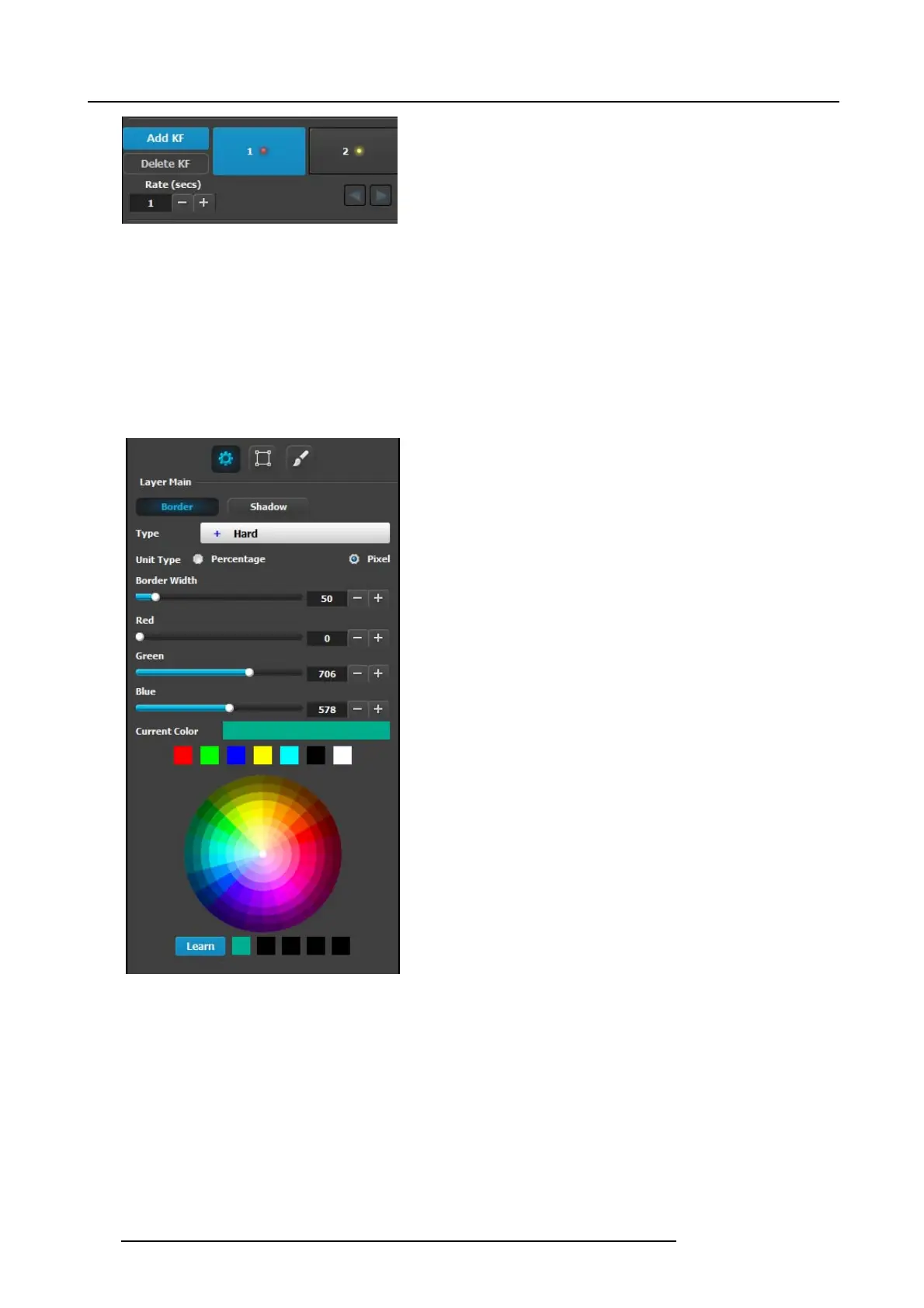6. GUI orientation
Image 6-56
Once the two keyframes ar e defined, the PIP can move between the two positions by pressing the green arrow bu ttons. The rate
for the mov ement is adjusted by changing the n umber in th e corresponding box.
Any of the two keyframes can be deleted when the keyframe is highlighted and by pressing the “Delete KF” button.
The red LED in the keyframe button indicates the current position of the PIP.
Layer adjustment panel > Main adjustment
The Main adjustment panel is variable according the Lay er type.
Layer type = PIP (Border Tab):
This m enu allows users to adjust the P IP borders.
• Borders are e nabled by selecting the type of to apply. Six
types are available:
-Hard
-Soft
-Halo
- Halo-in
- Halo-out
• Border width and color are selected by adjusting the
corresponding sliders or entering a figure in the adjacent
edit boxes. The border width can be entered either in
Percentage of the vertical size or in pixels.
• The s elected color is shown in the Current Color bar. The
color can also be stored by clicking in one of the square
boxes at the bottom of the me nu next to the Lear n button.
These boxes are quick shortcuts to select that color f or
the Border.
• Another way to specify a color is to click on the Color
wheel. The slider values will change accordingly as the
mouse moves around the color wheel.
• Learn: The “Learn” button in the bottom is a way to store
custom colors to be used for later. The way to us e this
area is to:
a) Pick a color to s ave, using color wheel or the R/G/B
adjustments.
b) Click Learn button.
c) Click any one of the buttons on the right.
d) The color that was picked is now stored in this button.
Lay e r type = PIP (Sh a dow Tab):
The Shadow Menu enables the user to plac e a shadow behind a PIP.
122
R5905948 E2 12/12/2014
